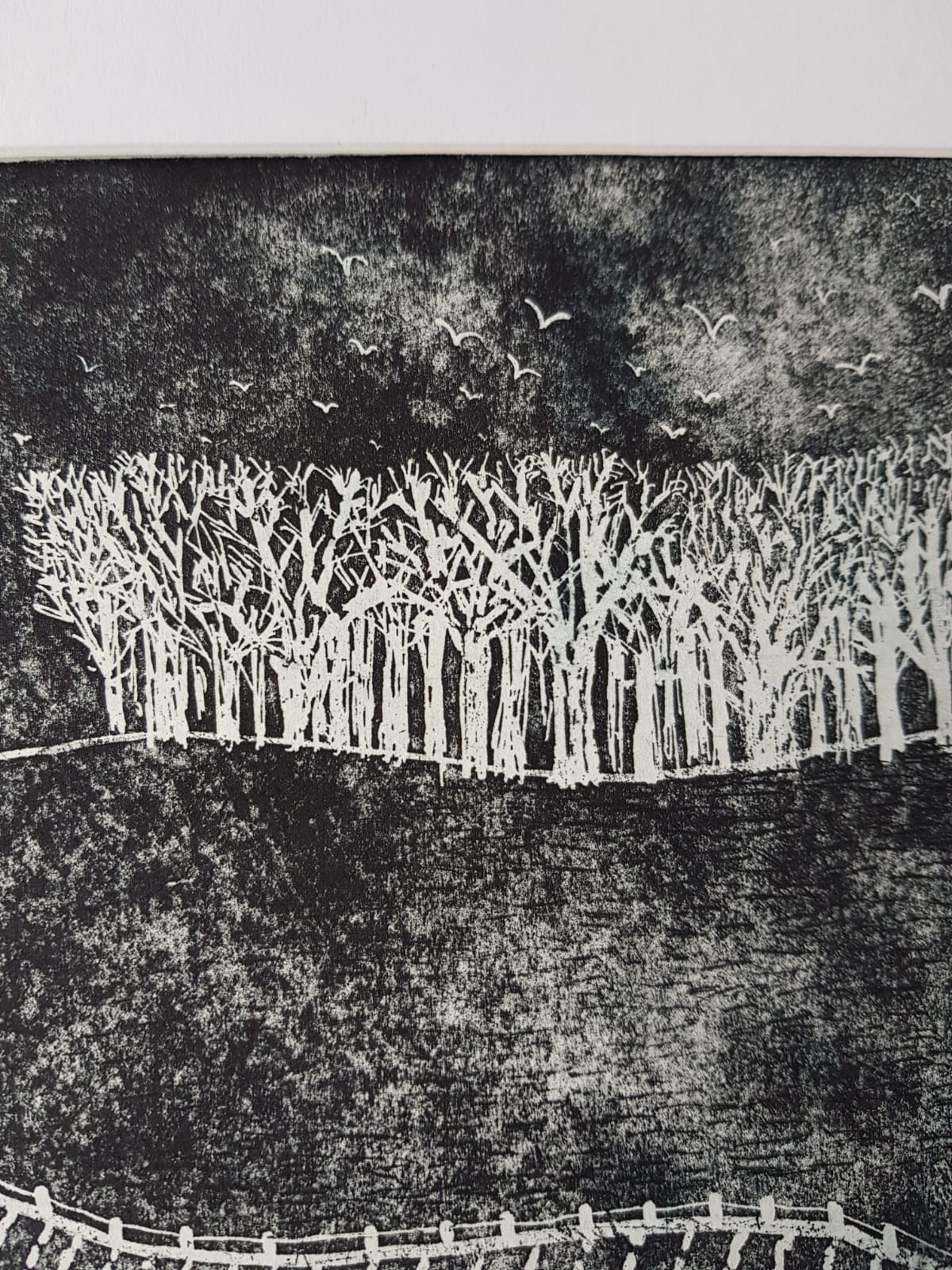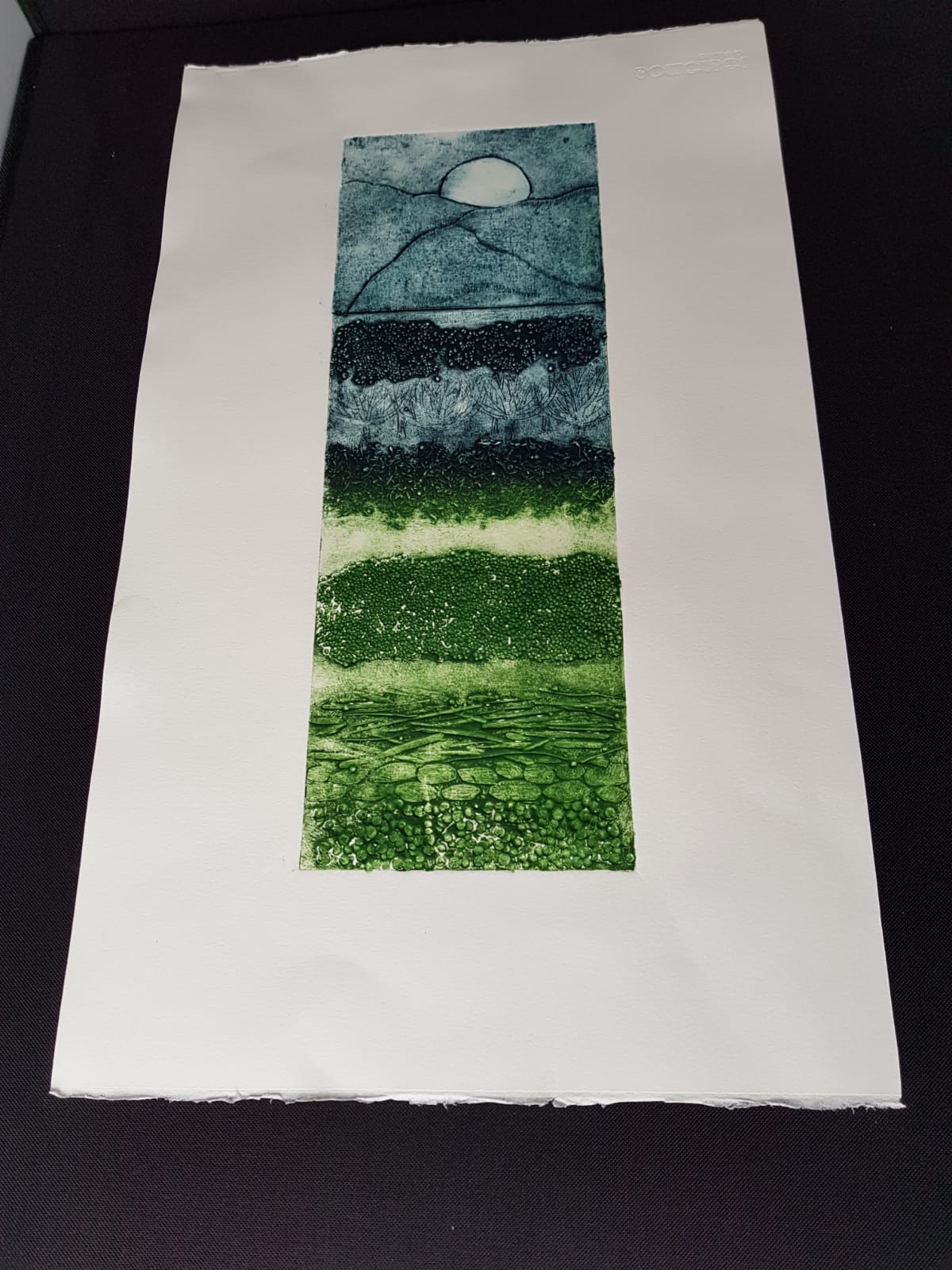Techniques
Lino Printing
I prefer to use Japanese vinyl, rather than traditional lino, and the design is cut into the surface using a V-shaped tool, which creates raised and incised areas. It’s then inked with a roller (called a brayer) and printed on my beautiful Gunning press. The actual cutting can take days, but seeing the design emerge from the block and come to life is just a joy.
And to get the design to the block? I draw directly onto the vinyl from my sketchbook, and the design unfolds gradually as I choose to work intuitively. Lino cutting is a gentle time of flinging the doors open in the summer and listening to birdsong, or listening to the crackle of my woodburner and the strains of a good audio book in the winter. I particularly love windy and wild days when I’m cosy inside and can hear the rain lashing down on my studio roof.
Etching
This an intaglio printmaking process which sees the design gently ‘scratched’ onto a metal plate and then incised using an acid (I use copper sulphate) in order to hold the ink. The plate is then inked and wiped by hand, a lengthy and almost meditative process for me. The plate is then carefully printed onto high quality, dampened paper using archival inks.
Drypoint
Drypoint is another type of etching, but no acid is required.
Collagraph
This is also considered multi-media art. I love the depth and texture that can be achieved. A sensory ‘collage’ is made by placing ‘texture’ onto a plate and securing it in place, then the plate is sealed and left to dry. The printing process is lengthy and ink is carefully ‘pushed’ into the texture, and any excess removed, before printing onto damp paper using my trusty Gunning press. It’s an exciting process and the results can vary, so taking the first print from the press is always a nail-biting moment, but when the results are good, then it’s just joyous (and I usually celebrate with a cup of early grey!)



